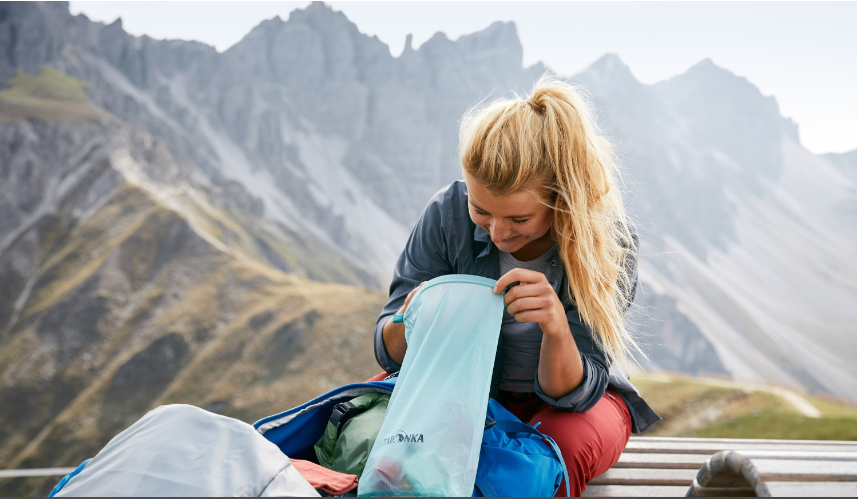
What to pack for hiking
Whether you are traveling in the mountains or in the local forests, you usually carry some luggage when hiking. Sometimes more, sometimes less, depending on the trip. But since you have to carry all your belongings with you, you should always limit yourself to the essentials and keep your backpack as light as possible. We tell you what should not be missing from your hiking backpack.
As light as possible
The backpack should be as light as possible.
The backpack should be as light as possible. When packing a hiking backpack, you should always pay attention to the weight. If you limit yourself to buying only the essentials, you can save your back and avoid tedious rummaging in a full pack.
As a rule of thumb, your gear should weigh no more than 20 to 25 percent of your body weight. Whether you can break this limit depends on your personal fitness level.

Changing clothes
Packing bags help keep things tidy.
Packing bags help keep things tidy. The items you need for hiking depend on the planned trip. Depending on the weather conditions, you should wear appropriate clothing or carry it with you. With the help of the layering principle, you will become particularly flexible. Layers that you don’t need at the moment are stored in your backpack. This is especially true when hiking in the mountains. Mountains are usually colder than valleys and the weather changes more quickly. Therefore, even on warm days, bring warm layers and, if necessary, a rain jacket. In summer, proper sun protection and headgear are also important. On the other hand, bindings are recommended for snowshoeing.
Depending on the trip, a change of clothes (e.g. shirt or socks) may also be useful. This applies, for example, to people who sweat easily. However, it is also pleasant to be able to change from wet to dry clothes in heavy rain. Wet or sweaty items can be easily stored in a waterproof backpack without wetting the rest of the contents. Practical bags also help to keep order in the backpack and find individual items faster.

Road rules
You should carry enough liquids and food with you.
You should carry enough liquids and food with you. You can’t go without food on a day trip. It is worth reading the route description in advance here. If there are no refreshment stops, you will need to carry more. This also applies to drinks. Especially on warm days and on strenuous trips, it is important to have enough to drink, either in the form of a water bottle or an integrated hydration system with airbag. With the help of a practical water filter, the water supply can be replenished at any time.
To avoid waste, it is best to pack your food in a suitable lunch box. Alternatively, you can carry a small garbage bag with you to collect your waste and take it back to the valley.

Be prepared for anything
No backpack should be without a first aid kit.
No backpack should be without a first aid kit. A headlamp is a useful companion on long trips. Especially in the fall and winter months, it often gets dark faster than you think. In addition, a first aid kit should not be missing from any hiking backpack. The more demanding and longer the trip, the better equipped you should be. Blistering plasters are also a good idea.
Along the way, you will often pass beautiful places to stop and take a break. But there aren’t always benches to sit on. This is where seat cushions come into play. These can pack down small and make a practical seat, especially if the ground is still wet.
Hiking poles are also helpful, especially when traveling in the mountains. Collapsible poles and telescopic poles can be easily attached to the outside of your backpack when they are no longer needed. If you use your smartphone as a route planner or locator tool, make sure the battery is charged and has a long enough life. If in doubt, take a mobile power supply or spare batteries with you.

